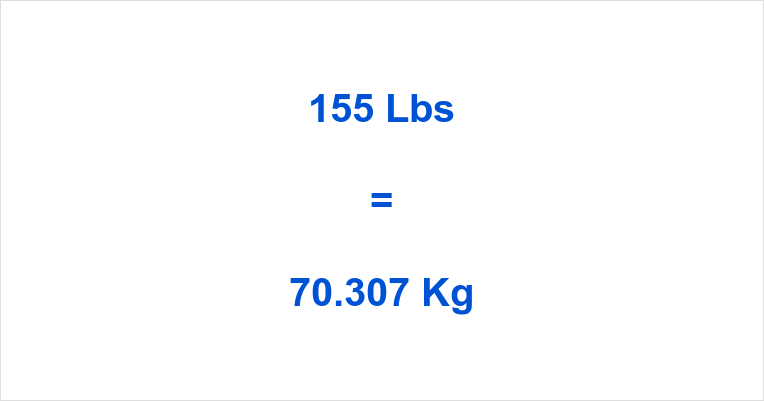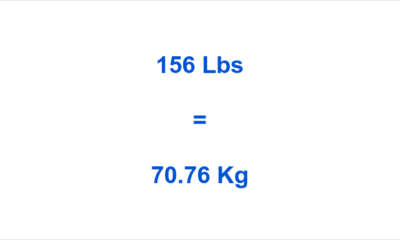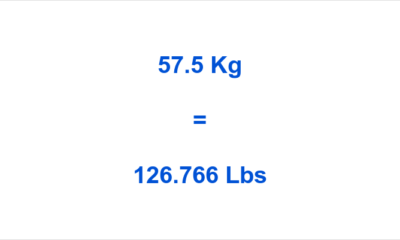Education
25 of 150: What It Means & Why It Matters

Introduction
You’ve probably seen “25 of 150” pop up somewhere—maybe in a report, an app, or even a game. But what does it actually mean? Is it a score? A ranking? A percentage? Well, it could be all those things and more.
In this post, we’ll break down the meaning of “25 of 150,” explore where you might encounter it, and explain why it matters. Whether you’re dealing with progress tracking, statistical data, or performance evaluations, understanding this number can be helpful in various scenarios.
What Does “25 of 150” Mean?
At its core, “25 of 150” is a fraction that indicates progress, ranking, or quantity within a total set. Let’s break it down:
- 25 represents a specific amount, score, or position.
- 150 represents the total possible amount, score, or positions available.
When you see “25 of 150,” it generally means you have achieved or completed 25 out of a total of 150 available units. But depending on the context, its meaning can shift slightly.
Common Contexts for “25 of 150”
The phrase “25 of 150” appears in many areas, including education, business, gaming, and daily life. Here are a few common ways it is used:
1. Progress Tracking
In apps or digital tools, you might see “25 of 150” as a progress indicator. For example:
- E-books & Online Courses: If you’re reading an online book or taking an e-learning course, you might be on page 25 out of 150.
- Task Lists: A project management tool might show that 25 tasks out of 150 have been completed.
This type of progress tracking helps users stay motivated by showing how much they’ve accomplished and how much is left to go.
2. Rankings & Scores
When participating in competitions, rankings, or academic evaluations, “25 of 150” might indicate your position:
- Exams & Tests: If you scored 25 out of 150, it might not be a great score depending on the grading system.
- Competitions: If you placed 25th in a field of 150 participants, it means you performed better than most but didn’t reach the top.
3. Statistical Data & Surveys
Data analysts and researchers frequently use fractions like “25 of 150” to report results. Examples include:
- Survey Responses: If a survey receives 150 responses and 25 people answered a question in a specific way, that’s a useful data point.
- Demographics & Reports: A report may state that 25 out of 150 customers preferred a certain product, which could influence business decisions.
4. Gaming & Achievements
Gamers often encounter progress-based stats like “25 of 150”:
- Collectible Items: If a game requires you to collect 150 hidden objects and you have found 25, you’re at about 16% completion.
- Level Advancement: Some RPGs or battle games require players to defeat a certain number of enemies to unlock rewards. “25 of 150” might mean you’ve defeated 25 enemies out of 150 required to level up.
Why Does “25 of 150” Matter?
Knowing how to interpret “25 of 150” can be useful in everyday life and work. Here’s why:
1. Goal Setting & Motivation
Understanding your progress can keep you motivated. Whether it’s in a fitness app, work project, or game, knowing that you’ve completed 25 out of 150 can encourage you to keep going.
2. Performance Evaluation
When used as a ranking or score, it provides a clear metric to gauge performance. For example:
- Scoring 25 out of 150 in an exam could indicate areas for improvement.
- Ranking 25th out of 150 in a contest means you’re in the top 16%, which is pretty good.
3. Decision Making
Businesses, marketers, and analysts rely on data. If 25 out of 150 customers prefer a certain product, that’s around 16.7%—a useful insight for making informed business decisions.
4. Perspective on Completion
Seeing “25 of 150” in a to-do list, gaming milestone, or training program lets you understand how much effort is left. It prevents frustration by giving a realistic expectation of the workload or challenge ahead.
Conclusion
“25 of 150” is a simple but important metric that shows progress, ranking, or statistical information. It’s widely used in everything from education and gaming to business analytics and productivity tracking.
Understanding how to interpret it can help you track goals, assess performance, and make informed decisions. So, the next time you see “25 of 150,” you’ll know exactly what it means—and why it matters.
FAQs
1. What percentage is 25 out of 150?
To find the percentage, divide 25 by 150 and multiply by 100: (25/150)×100=16.67%(25/150) \times 100 = 16.67\%(25/150)×100=16.67%
So, 25 out of 150 is 16.67%.
2. Is 25 out of 150 a good score?
It depends on the context. If it’s a test score, 16.67% is quite low. But if it’s your ranking in a competition with 150 participants, it means you performed better than most.
3. How do I improve my ranking if I am 25th out of 150?
To improve your ranking:
- Identify your weaknesses and work on them.
- Study or practice smarter, not just harder.
- Learn from top performers and apply their strategies.
4. Can “25 of 150” be used in marketing?
Yes! Businesses often analyze data this way:
- If 25 out of 150 customers buy a certain product, that’s 16.67% conversion.
- If 25 of 150 emails were opened, the open rate is 16.67%.
5. What should I do if I’ve completed 25 out of 150 tasks?
Break the remaining 125 tasks into smaller chunks and prioritize the most important ones. Using productivity techniques like the Pomodoro Technique or time blocking can help.
Education
155lb to kg – Quick and Easy Weight Conversion Guide

Introduction
If you’ve ever come across a weight measurement in pounds and wondered how it translates to kilograms, you’re not alone. Whether you’re tracking your fitness progress, following a diet plan, or dealing with international weight conversions, knowing how to convert 155 pounds (lb) to kilograms (kg) can be extremely helpful.
In this guide, we’ll break down the conversion process, provide an easy formula, and explore why understanding different weight units matters. Let’s dive in!
155lb to kg – The Simple Conversion
The conversion formula from pounds to kilograms is: 1 lb=0.453592 kg1 \text{ lb} = 0.453592 \text{ kg}1 lb=0.453592 kg
So, to convert 155lb to kg: 155×0.453592=70.31 kg155 \times 0.453592 = 70.31 \text{ kg}155×0.453592=70.31 kg
Thus, 155 pounds is approximately 70.31 kilograms.
Why Convert Pounds to Kilograms?
Different countries use different measurement systems. While the United States primarily uses pounds, most of the world, including Europe and Asia, uses the metric system, which includes kilograms. Converting weights can help with:
- Fitness & Health: Many gym programs and weight loss plans use kilograms.
- Cooking & Nutrition: Some recipes list ingredients in metric measurements.
- Traveling & Shopping: Luggage weight limits at airports are often in kg.
- Science & Medicine: Medical reports and prescriptions may use metric units.
Understanding both systems can save you from confusion, especially when dealing with international standards.
Other Common Weight Conversions
Here’s a quick reference table for converting nearby weights:
| Pounds (lb) | Kilograms (kg) |
|---|---|
| 150 lb | 68.04 kg |
| 155 lb | 70.31 kg |
| 160 lb | 72.57 kg |
| 165 lb | 74.84 kg |
| 170 lb | 77.11 kg |
If you ever need to convert other values, simply multiply the number of pounds by 0.453592 to get the weight in kilograms.
How to Convert 155lb to kg Without a Calculator
If you don’t have a calculator handy, a rough estimation method is:
- Divide the weight in pounds by 2.2 155÷2.2≈70.45155 \div 2.2 \approx 70.45155÷2.2≈70.45
- This method gives a close approximation to the actual conversion of 70.31 kg.
While this isn’t perfect, it’s useful when you need a quick mental estimate.
Historical Background: Pounds vs. Kilograms
- Pounds (lb): Originated from the Roman “libra,” which was used as a standard weight unit.
- Kilograms (kg): The metric system was adopted in the late 18th century in France, and now, it’s the official weight unit in most countries.
The pound remains in use primarily in the US, the UK, and a few other places, while kilograms dominate international trade, science, and daily life in most parts of the world.
Fun Facts About Weight Conversion
- The International System of Units (SI) defines the kilogram based on a physical constant, making it the most accurate weight measurement.
- Your weight can slightly change throughout the day due to water intake, food consumption, and digestion.
- The heaviest human ever recorded, Jon Brower Minnoch, weighed 1,400 lb (635 kg)!
Conclusion
Now you know that 155lb to kg, along with useful tips on how to estimate weight conversions. Whether you’re working on your fitness goals, traveling, or simply curious, converting between pounds and kilograms is a handy skill.
FAQs
1. What is 155 lb in kg rounded to two decimal places?
155 lb is 70.31 kg when rounded to two decimal places.
2. How do I quickly convert pounds to kilograms?
Use the formula: Weight in pounds×0.453592=Weight in kg\text{Weight in pounds} \times 0.453592 = \text{Weight in kg}Weight in pounds×0.453592=Weight in kg
Or for a quick estimate, divide the weight by 2.2.
3. Is 155 lb a healthy weight?
It depends on factors like height, age, and body composition. Always check with a BMI calculator or a healthcare professional.
4. What is the easiest way to remember the conversion factor?
Remember that 1 pound ≈ 0.45 kg, so you can quickly estimate by halving the weight and adjusting slightly.
5. Why do some countries use pounds while others use kilograms?
The United States and a few other places still use pounds due to historical reasons, while most of the world adopted the metric system for consistency and ease of use.
Education
140 lbs to kg: Easy Conversion & Practical Guide

Introduction
Ever wondered how much 140 lbs is in kilograms? Whether you’re tracking your weight, following a fitness plan, or just curious about the metric system, knowing how to convert pounds to kilograms is useful. In this guide, we’ll break it down in an easy-to-understand way, provide practical examples, and answer some common questions.
By the end of this post, you’ll not only know the conversion but also understand why different measurement systems exist and how to apply this knowledge in daily life.
How to Convert 140 lbs to kg?
Converting pounds (lbs) to kilograms (kg) is simple. You just need to know the conversion formula: 1 lb=0.453592 kg1 \text{ lb} = 0.453592 \text{ kg}1 lb=0.453592 kg
So, to convert 140 lbs to kg: 140×0.453592=63.5 kg140 \times 0.453592 = 63.5 \text{ kg}140×0.453592=63.5 kg
Quick Answer:
140 lbs = 63.5 kg
Why Convert Pounds to Kilograms?
There are many reasons why you might need to convert pounds to kilograms:
- Traveling Abroad: Many countries use the metric system, so knowing your weight in kilograms can be useful.
- Fitness & Health: Many fitness and diet programs use kg instead of lbs.
- Science & Education: Many scientific calculations and academic studies use the metric system.
- Medical Reasons: Some medications and dosages are calculated based on weight in kilograms.
Quick Conversion Chart
| Pounds (lbs) | Kilograms (kg) |
|---|---|
| 100 lbs | 45.4 kg |
| 120 lbs | 54.4 kg |
| 140 lbs | 63.5 kg |
| 160 lbs | 72.6 kg |
| 180 lbs | 81.6 kg |
| 200 lbs | 90.7 kg |
If you need a different conversion, simply multiply your weight in pounds by 0.453592 to get kilograms.
Fun Facts About Weight Measurements
- Pounds vs. Kilograms: The pound (lb) is commonly used in the U.S. and some other countries, while the kilogram (kg) is part of the metric system and is used in most of the world.
- Metric System Dominance: Over 95% of the world uses the metric system.
- Why the Difference? The metric system was designed for simplicity and standardization, while pounds are based on older historical weight measurements.
Practical Uses of 140 lbs to kg
For Fitness & Weight Loss
If you’re tracking your weight for a fitness journey, knowing how to convert lbs to kg can help you compare progress across different systems.
For example:
- A person weighing 140 lbs (63.5 kg) can set a goal of reaching 60 kg (132 lbs) for a healthier lifestyle.
For Travel
When visiting countries that use kilograms, it’s helpful to know your weight in kg, especially if you’re checking luggage weight at the airport.
Example:
- Some airlines list baggage limits in kg (e.g., 23 kg limit). If you weigh 140 lbs (63.5 kg) and your luggage is 20 kg, you can calculate the total weight easily.
FAQs About 140 lbs to kg
1. What is 140 lbs in kg exactly?
140 lbs is exactly 63.5 kg when rounded to one decimal place.
2. How do I quickly convert pounds to kilograms?
Multiply your weight in pounds by 0.453592 to get kilograms.
3. Is 140 lbs a healthy weight?
It depends on your height, body composition, and fitness goals. A BMI (Body Mass Index) calculator can help determine if 140 lbs is a healthy weight for your height.
4. Why does the U.S. still use pounds instead of kilograms?
The U.S. primarily uses the imperial system due to historical reasons. However, the metric system is widely used in science, medicine, and global trade.
5. Is 140 lbs heavy in kilograms?
140 lbs equals 63.5 kg, which is a moderate weight depending on height and build.
Conclusion
Now you know that 140 lbs to kg, and how to make quick conversions between pounds and kilograms. Whether you’re tracking your weight, traveling, or studying, this knowledge can come in handy.
If you found this guide useful, share it with friends or bookmark it for future reference. Happy converting!
Education
72 Inches in Feet: A Simple Conversion Guide

Introduction
Have you ever come across a measurement in inches and needed to quickly convert it to feet? Understanding these conversions is essential, whether you’re working on a home improvement project, buying furniture, or just satisfying your curiosity. In this post, we’ll break down the simple conversion of 72 inches in feet, explain why it’s important, and provide some practical examples to help you grasp the concept better.
By the end of this guide, you’ll not only know how to convert inches to feet but also understand how this knowledge can be useful in everyday situations. Let’s dive in!
How to Convert 72 Inches to Feet
The conversion between inches and feet is straightforward:
- 1 foot = 12 inches
- To convert inches to feet, you divide the number of inches by 12.
Now, let’s apply this to 72 inches: 72÷12=672 \div 12 = 672÷12=6
So, 72 inches is equal to 6 feet.
Why is This Conversion Useful?
Understanding how to convert inches to feet can be handy in various real-life scenarios. Here are a few instances where knowing that 72 inches = 6 feet comes in useful:
1. Height Measurements
- If someone is 72 inches tall, that means they are 6 feet tall. This is a common height for basketball players and tall individuals.
2. Furniture and Home Improvement
- A standard door height in many homes is around 80 inches, but some doors may be 72 inches (6 feet) tall, which is a common size for sliding doors or closet doors.
- If you are buying curtains, a 72-inch length might be perfect for covering a 6-foot window.
3. Sports and Fitness
- Many fitness-related measurements use feet and inches. For example, a standard treadmill belt length is often around 72 inches (6 feet).
4. TV and Screen Sizes
- Large TV screens and projectors are often measured in inches. If a screen size is listed as 72 inches, it helps to know that it’s about 6 feet wide.
Other Common Conversions for Inches to Feet
If you’re dealing with inches regularly, here are some other useful conversions:
| Inches | Feet |
|---|---|
| 12 inches | 1 foot |
| 24 inches | 2 feet |
| 36 inches | 3 feet |
| 48 inches | 4 feet |
| 60 inches | 5 feet |
| 72 inches | 6 feet |
| 84 inches | 7 feet |
| 96 inches | 8 feet |
Having these conversions in mind can make it easier to estimate and compare measurements quickly.
Practical Examples of 72 Inches in Feet
To give you a better idea of what 6 feet (72 inches) looks like, here are some real-world comparisons:
- A standard adult male in the U.S. averages 5 feet 9 inches, which is close to 72 inches.
- A refrigerator height can range from 65 to 72 inches (6 feet).
- A queen-size bed is typically around 80 inches long, which is just slightly taller than 6 feet.
- A standard basketball hoop is 10 feet tall, so 72 inches is about 60% of its height.
Conclusion
Now you know that 72 inches equals 6 feet, and you’ve seen how this conversion applies to various aspects of everyday life. Whether you’re measuring height, furniture, or fitness equipment, understanding the relationship between inches and feet is a valuable skill.
Next time you see a measurement in inches, you can quickly divide by 12 to get the feet equivalent, making life just a little bit easier!
FAQs About 72 Inches in Feet
1. How many feet is 72 inches?
72 inches is 6 feet. You can find this by dividing 72 by 12.
2. What is 72 inches in feet and inches?
72 inches is exactly 6 feet 0 inches.
3. Is 72 inches a good height?
Yes! 72 inches (6 feet) is considered tall for an adult male and above average for an adult female.
4. How do I convert inches to feet quickly?
Simply divide the number of inches by 12 to get the feet. Example: 72 ÷ 12 = 6 feet.
5. How tall is 72 inches in centimeters?
To convert inches to centimeters, multiply by 2.54:
72 × 2.54 = 182.88 cm
So, 72 inches = 182.88 cm (about 1.83 meters).
-

 Education4 months ago
Education4 months ago156 Pounds in KG – Simple Conversion Guide
-

 Education4 months ago
Education4 months ago65.5 kg to Pounds – Easy Weight Conversion Guide
-

 Education4 months ago
Education4 months ago1.71m in ft: How to Convert & Why It Matters
-

 Education4 months ago
Education4 months ago102 lbs in kg: Easy Conversion and More!
-

 Education4 months ago
Education4 months ago57.5 kg to lbs: Easy Conversion and Why It Matters
-

 TECHNOLOGY3 months ago
TECHNOLOGY3 months agoUnmasking the Mystery of 6193036929
-

 TECHNOLOGY3 months ago
TECHNOLOGY3 months agoUnderstanding 631-248-5045
-

 Education4 months ago
Education4 months ago121 Pounds to Kilograms – Quick and Easy Conversion Guide
